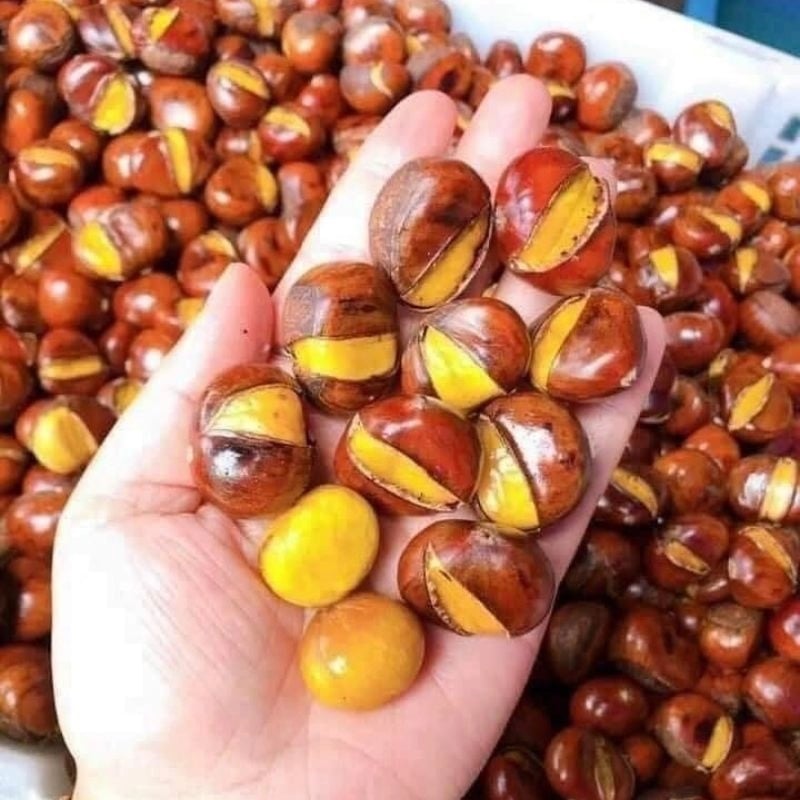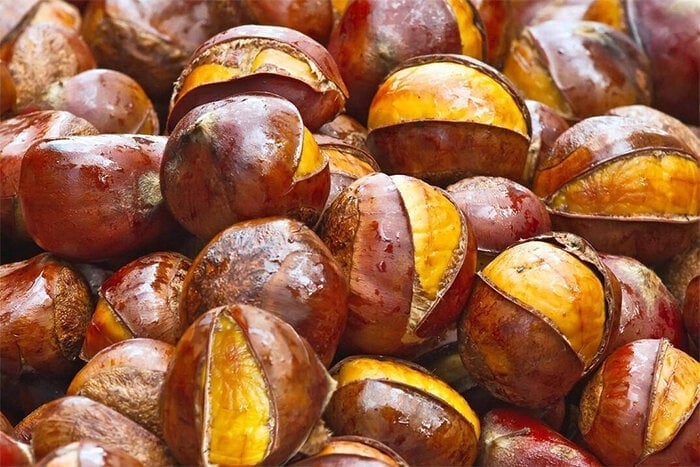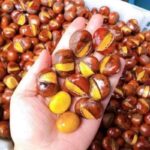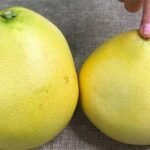Chestnuts are a beloved snack, especially during colder months. However, not everyone knows how to choose the best ones that are sweet, tasty, and most importantly, not bitter. Here are some secrets from long-time chestnut sellers to help you make the perfect choice.

Don’t Be Tempted by Large Chestnuts: Seller’s Tips for Choosing Sweet and Tender Ones
1. Know Your Chestnut Types
There are two common types of chestnuts, and understanding their differences is key before learning how to choose the best ones:
- Chinese Chestnuts: These tend to be larger in size, but their quality can be inconsistent. They may be bitter and not as sweet.
- Japanese Chestnuts: Usually smaller, but pack a punch in terms of flavor and sweetness. Go for these if you want a guaranteed tasty treat.
2. Observe Shape and Size
When selecting chestnuts, don’t be lured in by their size. Bigger isn’t always better. Opt for chestnuts that are moderately sized and uniformly shaped. The best ones usually have a glossy surface, free from cracks or holes.
3. Check the Color
Sweet chestnuts typically boast a light or dark brown hue, depending on the variety. Steer clear of pale or mold-indicating colors, as these could be signs of deterioration.
4. Listen for the Right Sound
Here’s an interesting tip from chestnut sellers: gently shake the bag of chestnuts. If you hear a “snap, crackle, and pop” sound, it indicates dry and tasty chestnuts. On the other hand, if the sound is damp, it’s best to avoid them.
5. Taste Test
If possible, sample the chestnuts before buying. Sweet, tasty chestnuts will have a nutty, slightly sweet flavor, and won’t be bitter. If they taste bitter or astringent, it’s a clear sign they’re past their prime.
6. Pay Attention to Origin
It’s advisable to purchase chestnuts from reputable sources with clear origins. Chestnuts harvested from good soil and cared for properly will likely be of superior quality.

The Sweet and Tender Chestnut Choice
7. Store Your Chestnuts Properly
Once you’ve selected the perfect chestnuts, proper storage is essential. Keep them in a cool, dry place. If you buy in bulk, consider using vacuum-sealed bags or airtight containers to prevent moisture.
Choosing delicious chestnuts not only guarantees a tasty snack but also enhances your gatherings and family reunions. Don’t forget to apply these tips to become a wise consumer. Happy chestnut-munching!
The Ultimate Guide to Buying Chestnuts: How to Spot the Perfect Sweet and Nutty Treats
When purchasing chestnuts, don’t just look for large sizes; instead, seek out nuts that are uniformly shaped and boast a glossy sheen. According to seasoned sellers, the sweetest chestnuts offer a delightful nutty flavor without any hint of starchiness, and a simple shake test will reveal their superior quality.
How to Spot Unnatural Preservatives in Plum Candy
For many families, dried sour fruits are a popular choice for a festive treat when entertaining guests. However, with a plethora of these treats on the market, many are concerned about the presence of harmful chemicals and artificial sweeteners. The following method can be used to distinguish between these potentially harmful treats and those that are safe to consume.






































